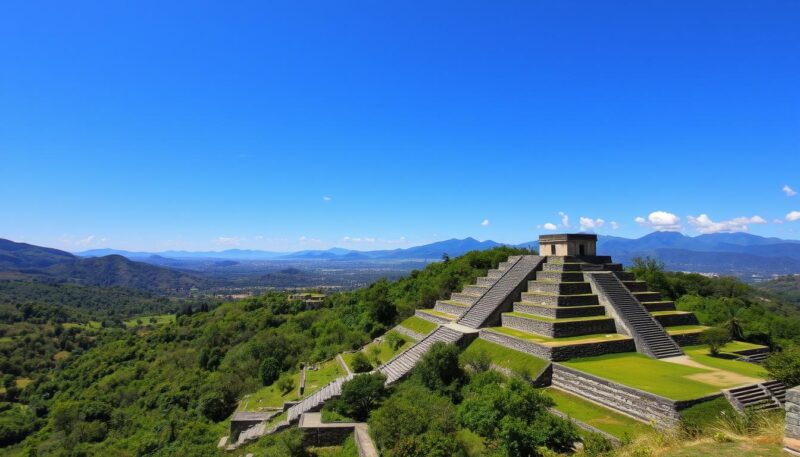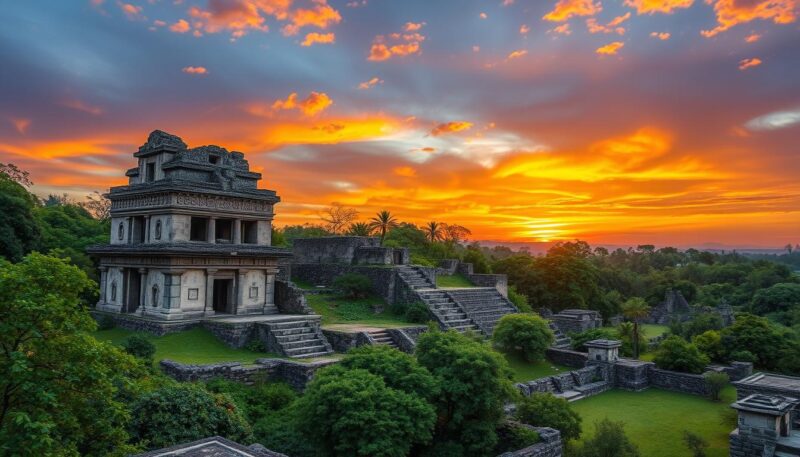For history enthusiasts, the area surrounding Mexico City offers a treasure trove of ancient ruins that speak volumes about Mesoamerican history. From towering pyramids to sacred temples, these archaeological sites reveal the splendor of civilizations that flourished thousands of years ago. Each destination not only showcases intricate designs but also serves as a portal into the rituals, structures, and deities worshipped by the ancient peoples of this region. As you explore these sites, consider the enduring mysteries of Mexico’s lost cities, and immerse yourself in the fascinating narratives of the past.
Among the best archaeological sites near Mexico City is Teotihuacán, a testament to a civilization that thrived around 100 BCE, known for its colossal structures like the Pirámide del Sol, the world’s third-largest pyramid. Visiting these ancient ruins allows for an enlightening experience that evokes the spiritual significance and architectural brilliance embedded within their stones. Furthermore, the rich heritage represented in these monuments, from the grandeur of the Aztec civilization at Templo Mayor to the lesser-known yet enchanting Cuicuilco, enchants visitors, revealing layers of history woven into the very fabric of modern-day Mexico City.
Top Ancient Ruins to Explore Near Mexico City
Exploring the ancient ruins near Mexico City offers a captivating journey through history. Visitors can delve into the rich cultures and monumental achievements of Mesoamerican civilizations. Here are three remarkable sites to consider for your next adventure.
Teotihuacán: The City of the Gods
The ancient Mesoamerican city of Teotihuacán spans over 264 hectares and is located about 50 kilometers northeast of Mexico City. Known for its magnificent Teotihuacán pyramids, this site was a major trade center, flourishing between the 1st and 7th centuries AD. The Pyramid of the Sun, standing 70 meters tall and featuring 248 steps, is the world’s third largest ancient pyramid. Visitors can access this monumental site for an entrance fee of $64 MXN and enjoy breathtaking views from the summit.
Templo Mayor: A Glimpse into the Aztec Empire
Located in the heart of Mexico City, the Templo Mayor offers a vivid portrayal of Aztec civilization. This ceremonial center showcases extensive Templo Mayor history through detailed informational displays available in both Spanish and English. The site features significant architectural and ritual structures that highlight the cultural practices of the Aztecs, making it an essential visit for history enthusiasts.
Cuicuilco: A Hidden Gem
Far less crowded than its counterparts, the Cuicuilco pyramid is a fascinating site located in the south of Mexico City. The circular pyramid, dating back over 2,000 years, served as a ceremonial site for the ancient Cuicuilco civilization. This lesser-known gem allows visitors to appreciate the architectural styles of early Mesoamericans and the cultural significance of the rituals performed here.
Best Ancient Ruins Near Mexico City
Exploring the ancient ruins near Mexico City reveals a fascinating blend of cultures that shaped Mesoamerican history. The sites include remnants of the great civilizations like the Aztecs and the Mayans. Each destination offers its unique story, showcasing architectural brilliance and rich cultural practices.
Xochicalco: A Blend of Cultures
The Xochicalco ruins, located in Morelos, present a remarkable insight into the cultural amalgamation of Mesoamerica. Flourishing during the decline of Teotihuacán, this site features unusually well-preserved structures that reflect influences from various Mesoamerican societies, including the Aztec and Mayan civilizations. Visitors can marvel at the intricate carvings and ceremonial plazas, which illustrate the social and political dynamics of the era.
Key elements include:
- Astronomical observatory that suggests its importance in navigation and trade.
- Elaborate artwork that highlights the region’s artistic talents.
- A range of architectural styles reflective of the diverse cultures that contributed to its development.
Cholula: The Largest Pyramid in Terms of Volume
The Cholula pyramid stands as an impressive testament to the architectural prowess of ancient civilizations. This enormous structure is recognized as the largest pyramid by volume in the world, overshadowing even the Great Pyramid of Giza. The pyramid’s base is an astonishing example of the Aztec vs Mayan ruins, showcasing how these cultures influenced one another. Visitors can explore the various layers of construction, with each new phase revealing insights into the historical significance of Cholula as a religious and cultural center.

Conclusion
The exploration of ancient ruins near Mexico City offers travelers a unique opportunity to delve into the rich history of Mesoamerica. From the iconic Teotihuacán, once home to an impressive peak population of approximately 150,000 during the 5th century AD, to the captivating Templo Mayor that reveals the intricacies of the Aztec Empire, these must-see archaeological sites allow for a deeper understanding of the region’s historical narrative. Each site, whether renowned or obscure, enriches Mexico history travel with stories of the civilizations that flourished here.
Hidden gems like Cuicuilco and Xochicalco, along with prominent sites such as Cholula, which holds the title for the largest pyramid by volume, further contribute to the diverse tapestry of ancient cultures. The journey through these remnants is not just educational; it serves as a transformative experience that connects you to the past. As you wander through the ruins, the echoes of ancient lives resonate, providing insight into their vast achievements and struggles.
Ultimately, the ancient ruins near Mexico City are invaluable treasures that must be explored. These incredible sites stand testament to the grandeur of civilizations that once reigned, making them essential stops for anyone passionate about history. Embarking on this journey not only feeds the curiosity of history lovers but also fosters a greater appreciation for the profound cultural heritage that Mexico has to offer.

